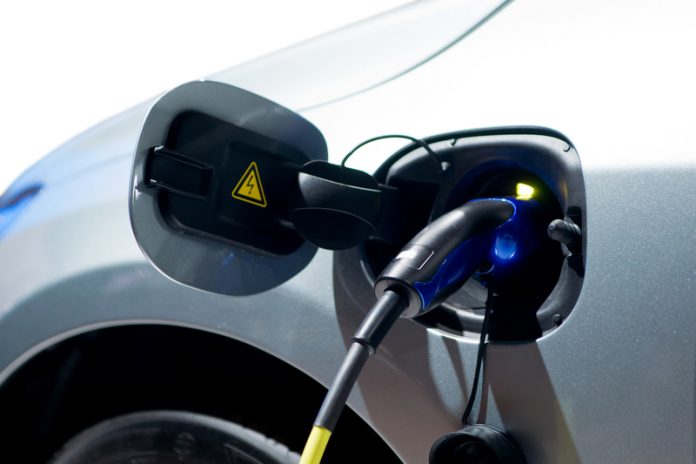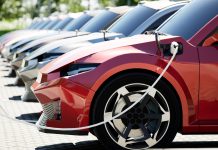Hans Bruyninckx, Executive Director at the European Environment Agency explains how cleaner and smarter transport can meet Europe’s need for mobility…
Transport connects people, cultures, cities, countries and continents. It is one of the main pillars of the modern society and economy, allowing producers to sell their products across the world and travellers to discover new places. Transport networks also ensure access to key public services, such as education and health, contributing to a better quality of life. Connecting to transport helps boost the economy in remote areas, create jobs and spreads wealth.
Transport also plays a decisive role in shaping the way we live: our food, clothes and household waste all need to be transported; it influences what products are on offer and what we consume and we use transport systems to go to work, school, the theatre and on holiday. Today high-speed train connections make long daily commutes possible, allowing people to live hundreds of kilometres away from their work.
There is, however, a downside to our current transport model. The transport sector causes substantial negative impacts on the environment and human health. Transport is responsible for a quarter of the EU’s greenhouse gas (GHG) emissions and causes air pollution, noise pollution and habitat fragmentation. More concretely, it is the only major economic sector in Europe where GHGs have increased since 1990 and is also the largest contributor to nitrogen oxides emissions, which harm health and the environment. Similarly, road transport is one of the main sources of environmental noise pollution in Europe.
Transport demand to rise further
Today the demand for transport in Europe is significantly higher than in 2000 and is expected to continue growing. According to European Commission estimates, by 2050 passenger transport is projected to grow by more than 50% and freight transport by 80% compared to 2013 levels.
Other challenges lie ahead. Europe’s transport depends heavily on oil. Oil consumption not only releases GHGs and air pollutants into the atmosphere and contributes to climate change, but also makes the European economy more vulnerable towards fluctuations in global energy supplies and prices.
Moreover, despite transport’s central importance to our economy and quality of life, not enough attention is paid to preparing Europe’s transport infrastructure to the challenges posed by climate change. Can Europe’s rail and road infrastructure cope with higher temperatures? Disruptions in transport services – volcano ash in the air, flooded roads or damaged rail tracks due to extreme weather – can have serious consequences for travellers, daily commuters and businesses, well beyond the affected area.
The transport system also needs to adapt to changes in Europe’s demographics. How can public transport be adapted to the mobility needs of an increasingly older population?
Technological improvements are not enough
In recent years, new cars and vans sold in Europe have become more and more energy efficient. For each kilometre travelled, they consume less fuel and release fewer pollutants than older models. Stricter policy measures have been instrumental in achieving these gains. Nevertheless, the number of vehicles on the road and the distances they travel continue to grow. Similarly, aircraft engines have become more efficient, but more passengers are flying and travelling further.
Incremental efficiency gains through technological improvements will fail to break the sector’s dependence on fossil fuels and negate its environmental impacts. Even after recent efficiency improvements in car engines, only up to a quarter of the fuel burnt is actually used for moving the vehicle. The rest is lost as heat, mechanical inefficiencies or is used for accessories. Moreover, recent improvements in official fuel efficiency statistics have been questioned. There are significant discrepancies between fuel consumption observed in real-world driving and testing under laboratory conditions.
Ultimately, the issue is not just about cars, planes, roads, ships or fuels – the different components of the transport system – but about the need to move people and goods from one place to another in an easy, safe and efficient way. We must build a clean, smart and comprehensive ‘mobility’ system that caters to mobility needs by offering a service tailored to user requirements.
Defining the mobility need: essential or a treat
The need may vary depending on the way we live. People living in compact cities where everything can be accessed on foot are less likely to rely on private cars. Fuel prices, housing and job markets, income levels and low-interest rates on bank loans can all influence how much and how we travel, or how the goods we consume are brought to us. Even topography can influence our choice of transport.
Globalisation of markets (e.g. global trade and travel) would not have been possible without extensive transport networks. The world economy grew along with transport demand, each fuelling the growth of the other. In today’s globalised world, consumers can buy products that only a few decades ago were not on offer, and which are now delivered to their doorsteps. Our lifestyles and consumption aspirations have changed accordingly. We expect to find cheap tomatoes on supermarket shelves and to take affordable vacations all year round. Ultimately, we should not be afraid of asking whether we actually need all this transport.
The mobility need can be assessed in different ways. First, is the journey essential or just a pleasant treat? Can it be avoided? Second, can the journey be shifted to a more environment-friendly transport mode, such as opting for train travel instead of flying, or for public transport instead of driving? And last, can the transport model be improved?
The European Union’s transport policies build on these ‘avoid, shift and improve’ principles, among others. Many measures in use to help curb the negative impacts of the transport sector, including fuel taxes, tolls or other road charges, are based on the ‘user/polluter pays’ principle. Such measures usually aim to reduce environmental impacts. Higher taxes and tolls, for example, might increase the price of using the vehicle, which in turn can lower the demand.
Unfortunately, the prices users currently pay for transport services do not reflect the full cost on the environment and public health. Carbon prices, global oil prices and passenger car prices tend to be too low to send a strong signal to users and investors. Furthermore, the price signal can be distorted by transport subsidies, the use of which remains widespread in Europe. In some cases, subsidies are designed to promote cleaner models, e.g. those provided to public transport. In other cases, such as tax breaks for company cars, tax exemptions on international aviation or shipping fuels and differential tax treatment for diesel and petrol, subsidies can have adverse impacts on the environment and lock the transport system into an unsustainable path.
Mobilising ideas, policy and funds
The current mix of transport modes and fuels is simply not sustainable. The choice is ours: we can choose to build a clean, accessible, coherent, climate-resilient mobility system that greatly contributes to our quality of life and well-being.
Cleaner and smarter transport can actually meet Europe’s need for mobility, and at the same time deliver many public health benefits, including cleaner air, fewer accidents, less congestion and less noise pollution. Where feasible, encouraging a switch to active mobility modes, such as walking and cycling, can also help improve other health problems such as cardiovascular diseases and obesity.
It is clear that decarbonising Europe’s transport sector will take time. It requires a combination of measures, including better urban planning, technological improvements, a wider use of alternative fuels, stronger price signals, innovative research, and continuous adoption of cutting-edge technology and stricter enforcement of existing rules. It also requires all investments in infrastructure and policy measures to be designed to this end.
Turning Europe’s carbon-dependent transport sector into a clean and smart mobility system might seem like a colossal task. It can be done and we know how we can make it happen. It is also a must, given the current transport system’s impacts on the environment and public health. I personally see it as an exciting opportunity for us to build a better and cleaner future.
http://www.eea.europa.eu/signals/signals-2016/articles/towardscleaner- and-smarter-mobility
Hans Bruyninckx
Executive Director
European Environment Agency
www.eea.europa.eu/
www.twitter.com/EUEnvironment











